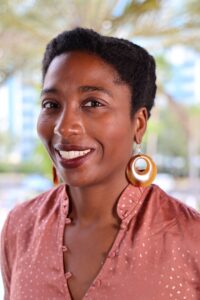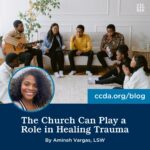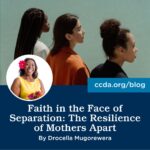When I think of communal mental health, I think of how our individual mental health impacts and is impacted by the mental health of others. I see it almost like a spiderweb, with spider silk that interconnects each of us to each other. It is sticky and strong, attracting and catching not only other people, but also the plants and animals and all others in our environment–keeping us all locked into the web that we have, perhaps unwittingly, created. Our interconnected communal mental health is mostly invisible until we (accidentally) run into it and can no longer ignore the impact of our neighbor’s mental health on ours.
However, being able to see and connect with our communal mental health can also be healing. For centuries, people across continents and cultures have used spiderwebs to heal wounds. To do so, you need to pull the spider silk strands together, either wrapping them into a ball or mixing them into an ointment to treat bleeding wounds.
Spider silk, like our communal mental health, can best heal when we are all doing it together.
Physical, Emotional, and Spiritual Healing Together
I start here because, as CCD practitioners, we are in the business of healing the communities in which we live, work, and grow. Healing through community development is a physical, emotional, and spiritual act.
It is physical because we actively bring about the changes we want to see in our communities, whether it is a community garden to help residents access fresh foods or a youth leadership program to prevent violence.
However, healing is also emotional and spiritual. It is emotional because it can transform your outlook on life and hopes for the future. It is also spiritual because our deepest souls long for justice and reconciliation. Healing happens when these happen.
Healing is so deeply tied to these needs that Jesus starts the famous Sermon on the Mount by speaking to our emotional and spiritual needs. Among them, He reminds us:
God blesses those who hunger and thirst for justice, for they will be satisfied.
Matthew 5:6 (NLT)
Most importantly, healing is communal because our mental health is communal. Our trauma and emotional pain impact those around us because they impact the way that we see ourselves and the way that we treat others in the world around us.
Reframing Stories for Communal Healing
Growing up as a consistently underestimated Black female, I found that the stories people told about me, for me, and around me impacted the way that I saw myself and how I moved and breathed in this world.
In some ways, it still impacts me negatively. But, in many other ways, I have found a way for these stories to impact me positively. Recognizing my mental health is tied up in yours, and yours in mine, and ours in the world, I want to support the “spider silk” of our communal mental health by making it strong, steady, shared, and uplifting. This wasn’t something I came to on my own, but through the help and support of many others, including family, friends, mentors, colleagues, and peers.
Because of them, I now reframe the stories that are being told about me, about the communities that I work with, and about our place in the world to center the communal aspect of our shared time on this earth. By reframing, I am learning how to move and breathe in a different way. To be part of a spiderweb that heals rather than captures and consumes.
We all can do this. As CCD practitioners, you are doing this every day. How are you reframing your community’s story toward healing? If you don’t feel like you are doing it yet, how could you start?
Whatever you do, be sure to seek out and join with others to do it. This is never something we should do alone–remember, like spiderwebs, we are all bound up in each other. Only together can we support our communal mental health.
About Andrea L. Lowe, MPH, CPH

Andrea L. Lowe, MPH, CPH owns and operates the Social Impact Studio Consulting, LLC. Her 15-year health and human services career spans multiple states working with government agencies, non-profits, and the private sector on strategic planning, policy, advocacy, coalition management and program development initiatives. In addition to running her consulting business, she is currently pursuing her DrPH in Health Policy & Leadership with Loma Linda University.





